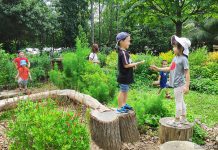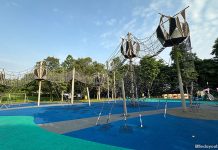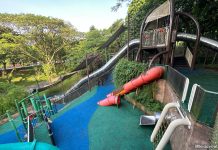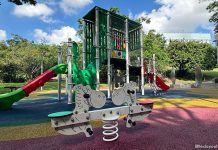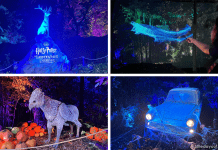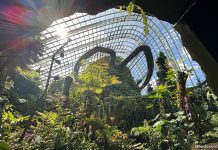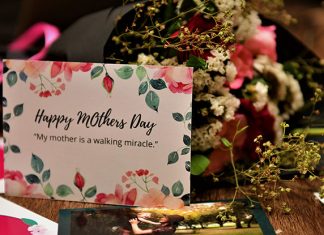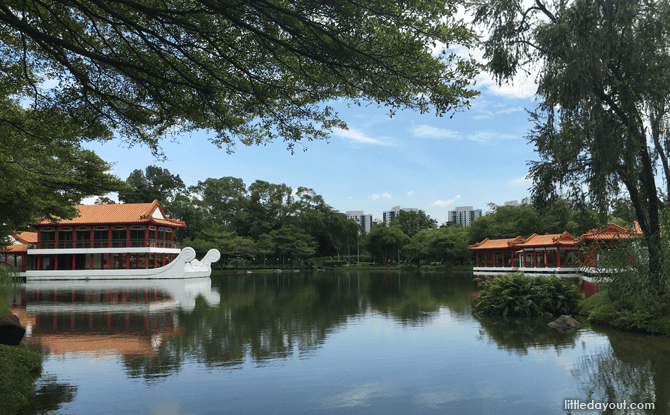
[Editor’s Note, 2020: Chinese Garden is currently closed for renovations.]
Chinese Garden, together with its sister park, Japanese Garden, are at the heart of new, upcoming Jurong Lake Gardens. While work has started at the adjacent Jurong Lake Park to transform it into Jurong Lake Gardens West and both the Chinese and Japanese Gardens will continue to stay open to the public up till 2018.
The Chinese Garden first opened in 1975. This makes it more than forty years old. While it doesn’t have the glamour of Gardens by the Bay or the pedigree of Singapore Botanic Gardens, it is still one of the most characterful parks in Singapore.
In 2015, it was given a sprucing up with architectural repairs, along with electrical and repainting works. In 2016, it received a further boost to its visitorship with sightings of rare Pokemon at the Chinese Garden drawing droves of Pokemon trainers.
But, there are more reasons to visit the iconic Chinese Garden than Pokemon-hunting. The Chinese Garden offers a landscape that is unique in urban Singapore. As a consequence of its setting on an island in Jurong Lake, it offers a tranquil place to escape to – particularly on weekdays when there are fewer visitors to the park.
Main Entrance to Chinese Garden
The red main entrance to Chinese Garden has a green tiled roof with three arches that play peek-a-boo with visitors to what lies inside the Garden. Guarded by two traditional Chinese lions, look out for details such as the brass knockers on the red wooden doors.
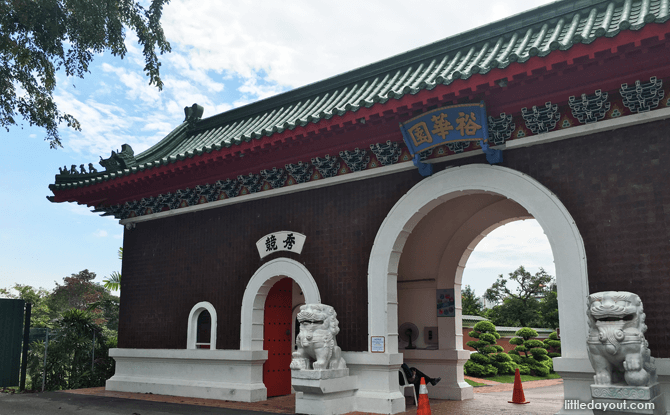
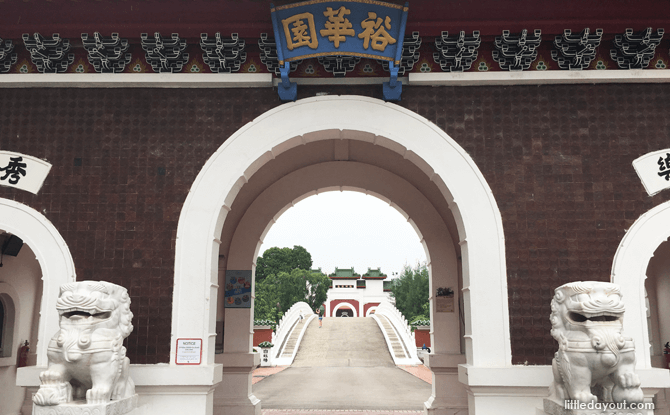
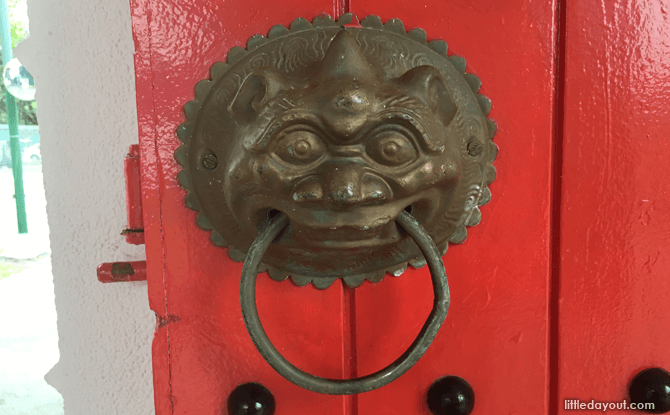
Past the entrance is the 13-arch Bridge. The classical white bridge squirrels visitors across the waters of Jurong Lake to the island where Chinese Garden is situated. The Chinese Garden’s 13-arch bridge is built in the style of the 17-arch bridge of the Summer Palace in Beijing.
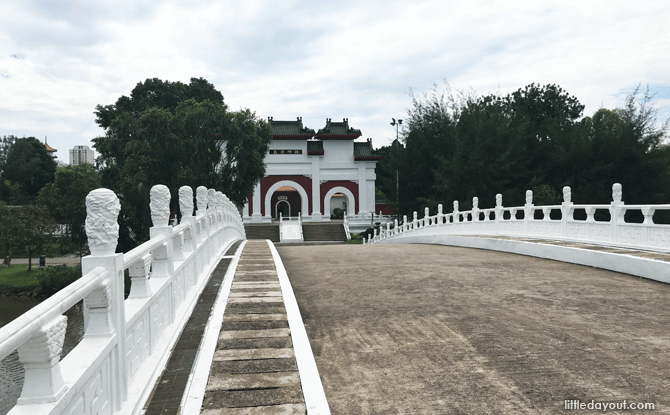
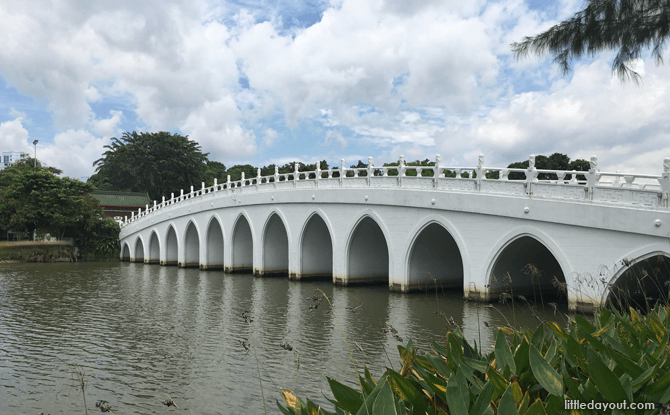
Main Arch Building
At the end of the 13-arch bridge is the Main Arch Building. Two broad sets of stairs lead upwards to the imposing building. Inside, there are two courtyards and a fish pond filled with koi.
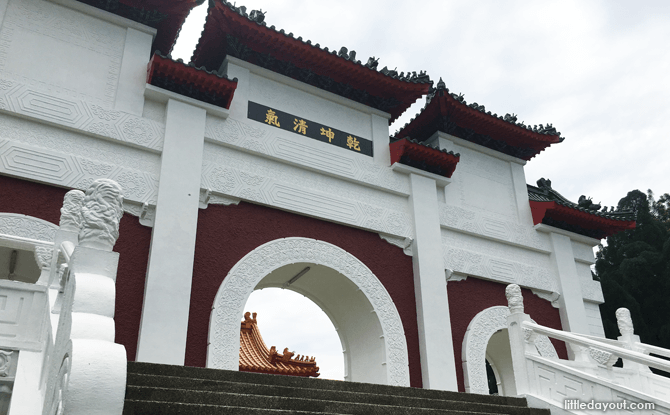
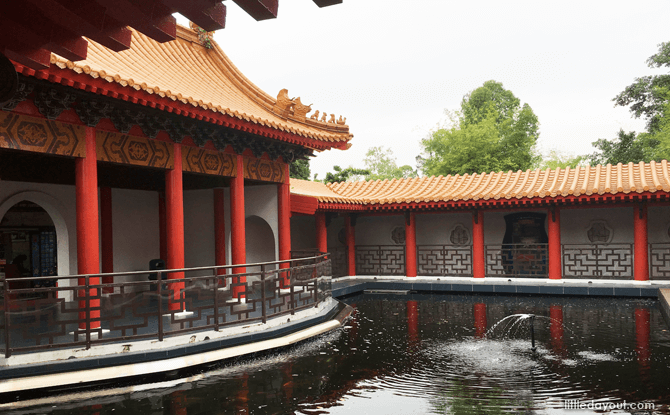
Since 2002, the Main Arch Building has been home to the Live Turtle and Tortoise Museum. Inside the museum is a private collection of live turtles and tortoises (what else). These are kept in enclosures and tanks. There are also free-ranging turtles and tortoises wandering around its open-air garden.
Besides the animals, there are also over 3,000 turtle and tortoise-related items in the museum. However, the best way to experience the private museum is to purchase some leafy greens from the counter and feed the animals.
The Live Turtle and Tortoise Museum is open from 9 am to 6 pm daily with a small entrance fee.
[Editor’s note: The Live Turtle and Tortoise Museum has shifted to ORTO]
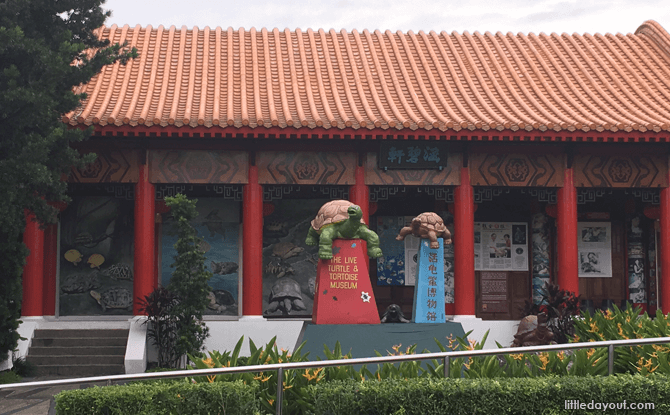
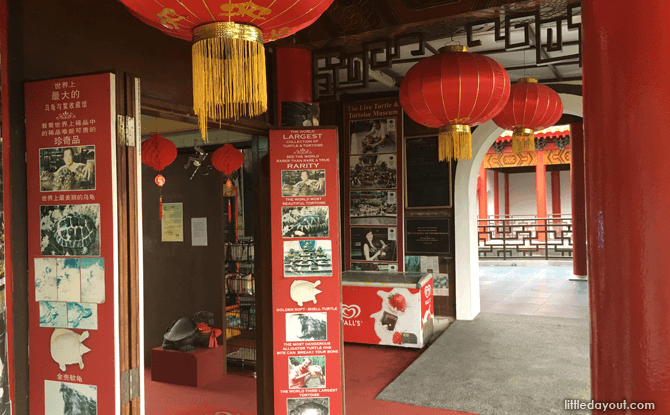
Landmarks Around Chinese Garden
Chinese Garden is built in the northern Chinese imperial architectural style of the Song Dynasty (AD 960-1279). As a result, you will find unique landmarks such as the Stone Boat and Tea House within its grounds.
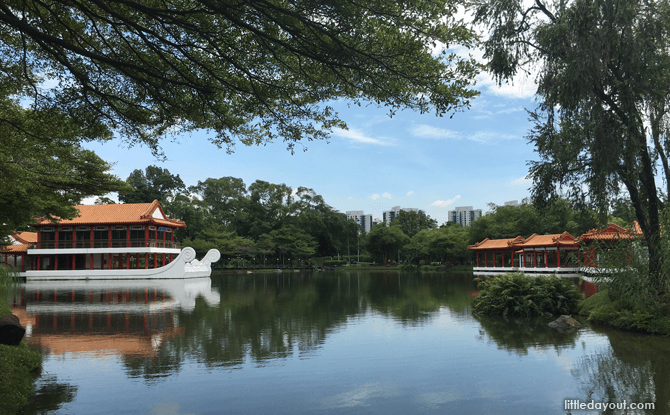
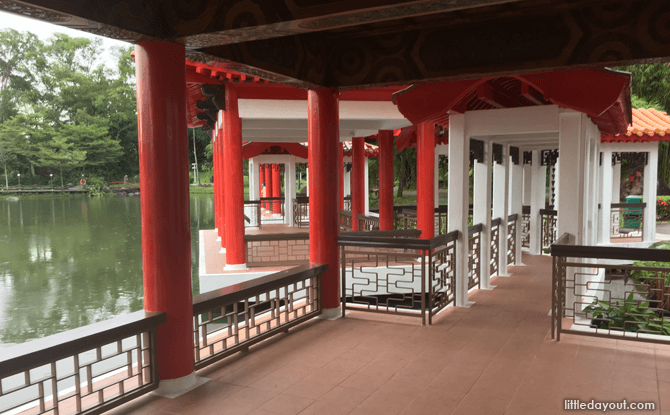
The most noteworthy of landmarks in the Garden are its pagodas.
There are three in total – a pair of twin pagodas abutting the waters of Jurong Lake and a towering one atop a hillock.
The twin pagodas are each three-storeys tall and accessible for the public to make the climb to the top.
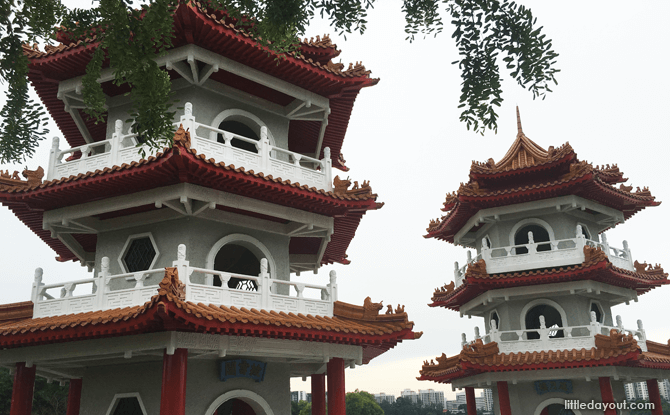
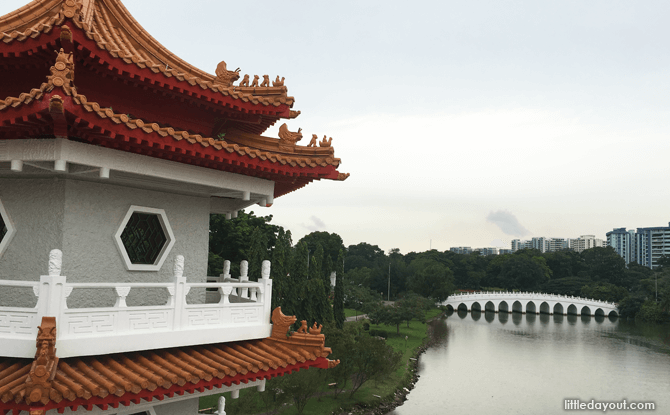
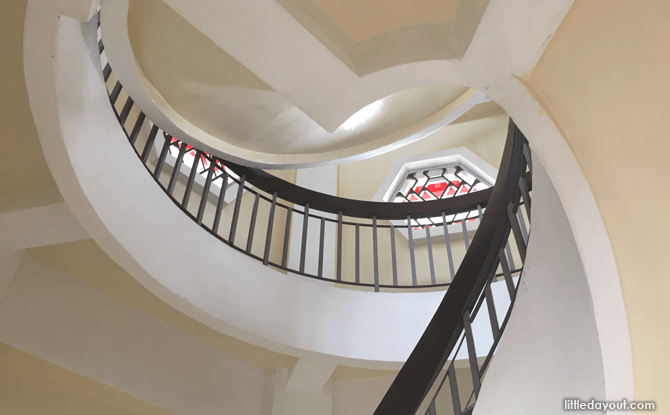
The other pagoda, known as the Cloud Piercing Pagoda, is seven-storeys tall. Inspired by the Linggu Temple Pagoda in Nanjing, China, it rises majestically above the surrounding Gardens. Those who are willing to make the spiralling climb are rewarded with sweeping views of the Gardens and lake below. The Cloud Piercing Pagoda is open from 6 am to 7 pm daily.
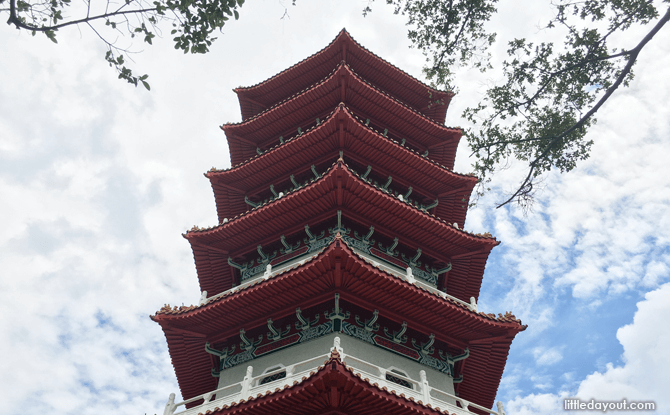
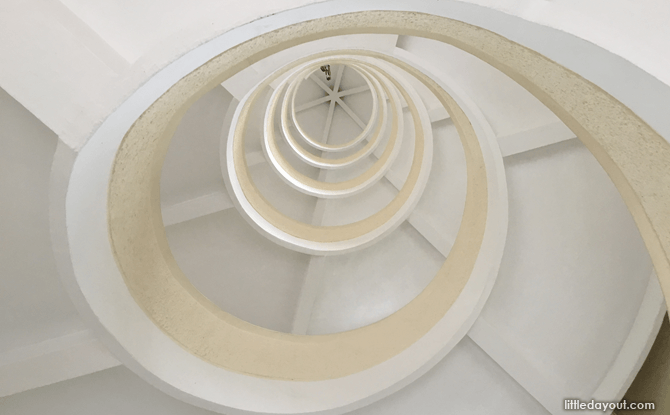

Bonsai Garden
Open from 9 am to 5 pm daily, the Bonsai Garden was added on to the Chinese Garden in 1992 and built in the Suzhou-style. Once you get past the two imposing terracotta warriors guarding the entrance, you will feel as if you have wandered into a traditional Chinese home – one filled with bonsai.
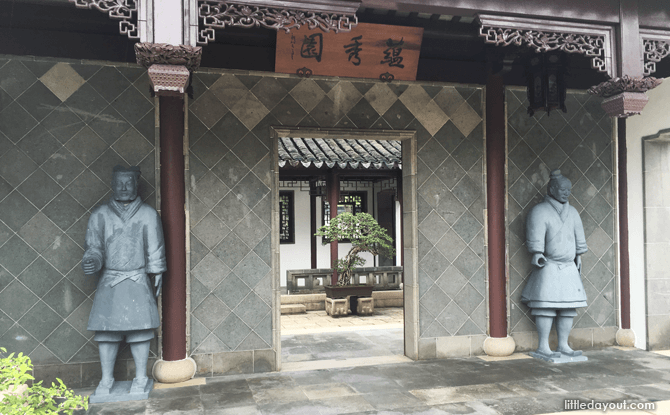
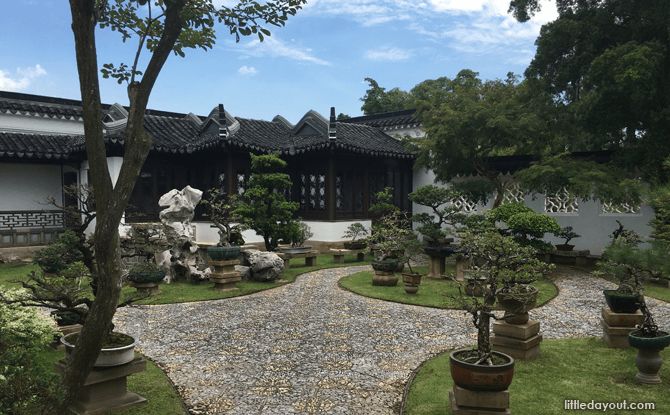
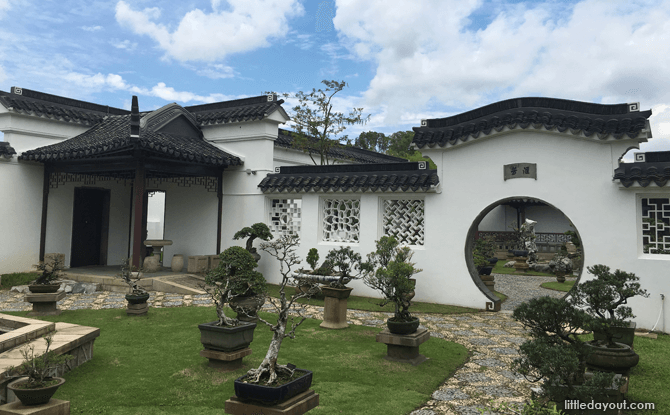
Other than the many plants around the courtyards, a unique spot within the walled Bonsai Garden is a pavilion situated on a rocky crag. Paths lead up to it from either side.
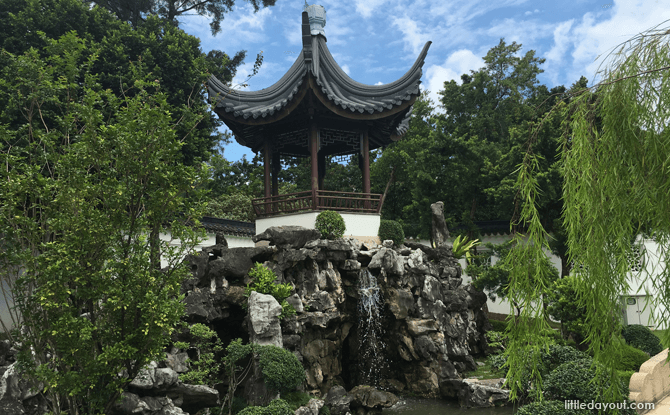 In addition, for those in the know, there is a hidden cave under the pavilion too!
In addition, for those in the know, there is a hidden cave under the pavilion too!
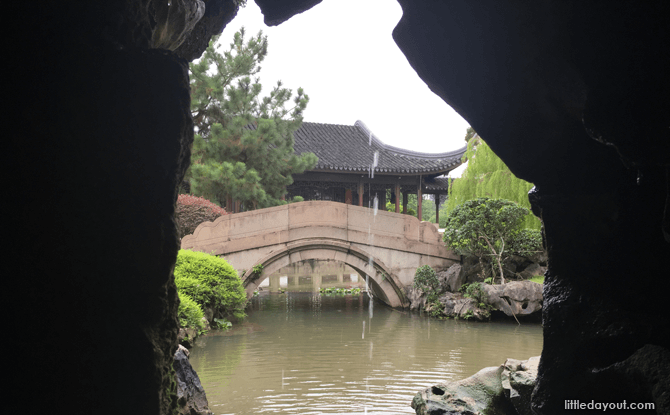
Just outside the walls of the Bonsai Garden is another fun spot – large stepping stones that hippity-hop across the waters of a pond.
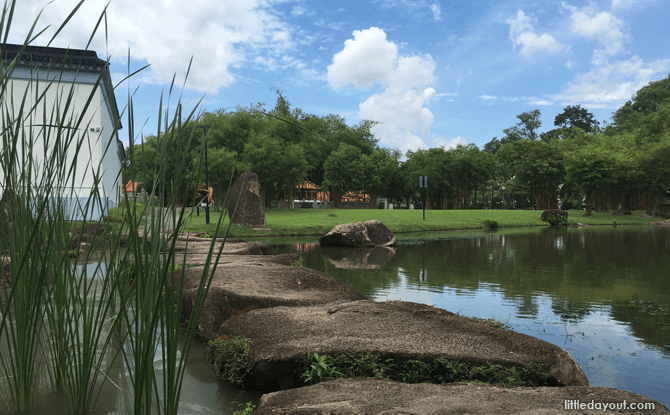
Garden of Abundance
Close to the bridge connecting Chinese Garden to the adjacent Japanese Garden is the Garden of Abundance. The most noteworthy feature here are the 100-year-old pomegranate trees planted here, but you are more likely to be drawn to the statues of the 12 Chinese Zodiac animals in the garden.
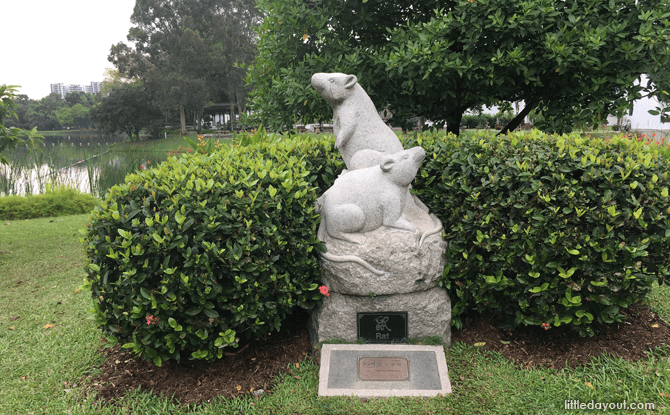
There are kid-sized stone benches featuring the animals, a sundial, and miniature bridges in this quiet corner of the park.
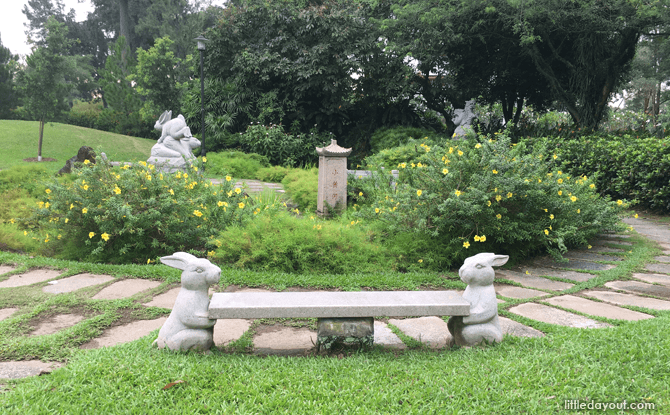
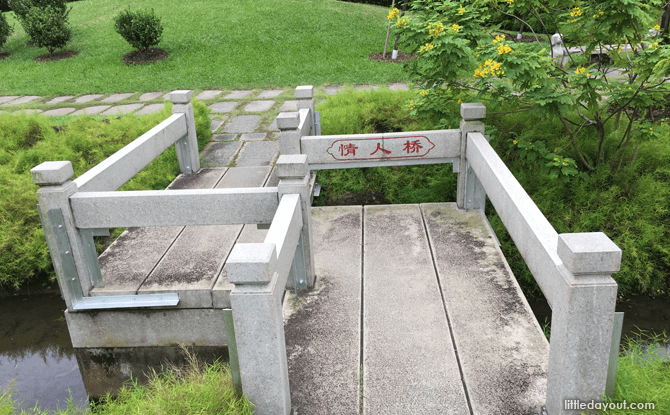
Chinese Garden for All Seasons
The Chinese Garden also has a community garden located toward the rear of the Live Turtle and Tortoise Museum.
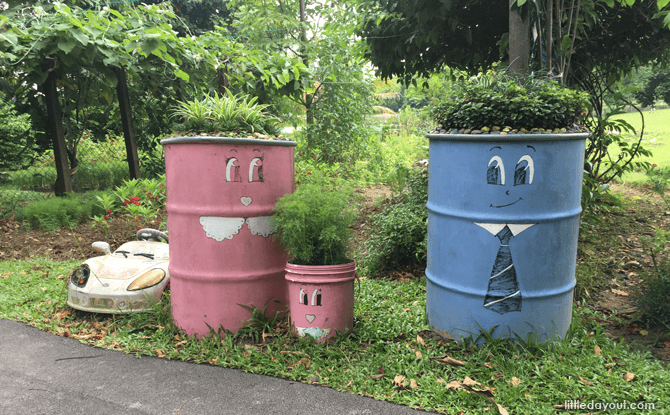 As a result of its unique setting, Chinese Garden is a popular location for families to visit during the Mid-Autumn Festival for lantern walks. In previous years, it would host a lantern festival and carnival. Nowadays, the major lantern display during the Mid-Autumn Festival takes place at Gardens by the Bay.
As a result of its unique setting, Chinese Garden is a popular location for families to visit during the Mid-Autumn Festival for lantern walks. In previous years, it would host a lantern festival and carnival. Nowadays, the major lantern display during the Mid-Autumn Festival takes place at Gardens by the Bay.
The Chinese Garden is linked to the neighbouring Japanese Garden by a white arch bridge.
The Jurong Lake Park and its fun playground used to be located next to the Chinese Garden. However, the Jurong Lake Park has been closed since April 2016 and is set to reopen in 2018 as Jurong Lake Gardens West. After Jurong Lake Gardens West has reopened, development work will start on Chinese and Japanese Gardens. Together, the Chinese and Japanese Gardens will form a new Jurong Lake Gardens Central.
Getting to Chinese Garden
Chinese Garden is open from 5.30 am to 11 pm daily. Admission is free.
Chinese Garden is easily accessible via the MRT. Firstly, from Chinese Garden MRT Station, head in the direction of the Cloud Piercing Pagoda. Then cross a small red bridge to get to the Chinese Garden (albeit not by the main entrance).
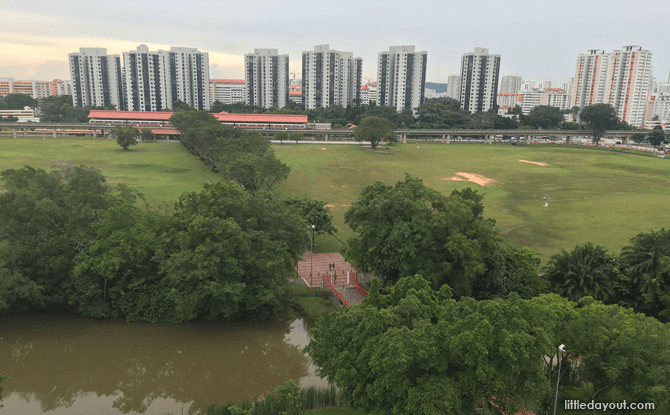
Those arriving by car or taxi can enter by Yuan Ching Road.
There are no food outlets at the Chinese Garden except for a little kiosk selling drinks and ice cream by the Main Entrance.
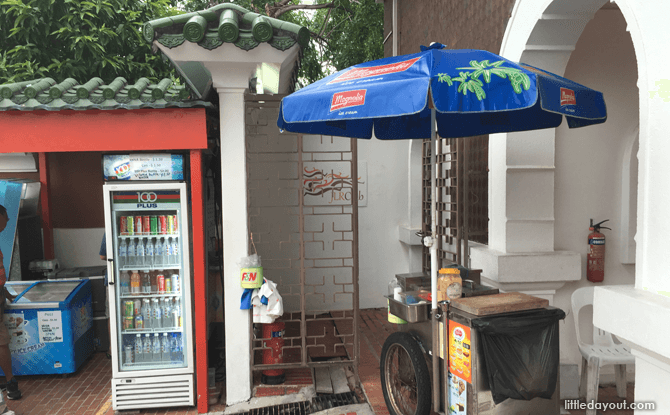
Chinese Garden
1 Chinese Garden Road
Singapore 619795
Free admission








